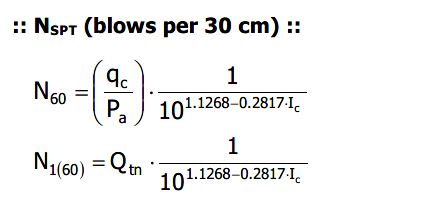Hello,
I am working with an engineer who recommended to perform SCP tests in the top 10 feet. I know there is a correlation of dividing the reading (qc) in kg/cm2 by 4 and that is the approximate N-value.
Does anyone know if there is a published reference that provides this information?, i just would like to know any official reference with this information.
Thanks
I am working with an engineer who recommended to perform SCP tests in the top 10 feet. I know there is a correlation of dividing the reading (qc) in kg/cm2 by 4 and that is the approximate N-value.
Does anyone know if there is a published reference that provides this information?, i just would like to know any official reference with this information.
Thanks

